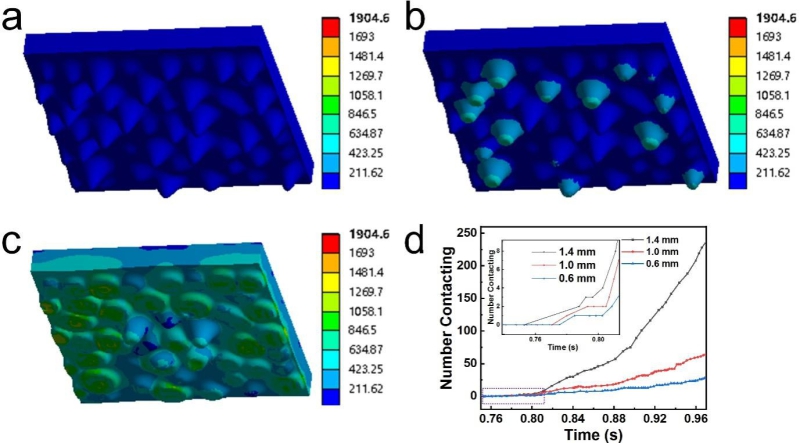Flexible Piezoresistive Pressure Sensor with Zero Standby Power Consumption under Bending Conditions
Date:29-04-2020 | 【Print】 【close】
Flexible pressure sensors have been widely used in various applications, such as humanoid robots, wearable electronics and energy harvesting
Piezoresistive pressure sensors, which convert the mechanical stimuli to an electrical signal, are particularly attractive to these applications due to their simplicity, lost cost and straightforward readout mechanism.
The ability of a flexible pressure sensor to possess zero power consumption in standby mode, high sensitivity and wide linear-response range is critical in real flexible matrix-based scenes.
However, when the conventional flexible pressure sensors are attached on the curved surface, a pseudo signal response is generated due to the normal stress, resulting in a short linear-response range.
A research team led by Dr. CHEN Ming and Dr. YANG Chunlei from the Shenzhen Institutes of Advanced Technology (SIAT) of the Chinese Academy of Sciences proposed a high performance, zero stand-by power consumption flexible piezoresistive pressure sensor, has effectively solved the above problems.
The proposed sensor was constructed by polydimethylsiloxane (PDMS)/carbon black (CB), patterned polyimide (PI) spacer layer and laser-induced graphene (LIG). The proposed pressure sensor (named PDMS/CB/PI/LIG) exhibited high sensitivity (43 kPa-1), large linear-response range (0.4~13.6 kPa), fast response (<40 ms) and long-term cycle stability (>1800 cycles).
“In our previous work, the design of rough-rough structure has greatly helped to improve the sensitivity of the pressure sensor. In this study, the hierarchical structure and sufficient roughness of PDMS/CB and LIG interdigital electrodes were used to improve the comprehensive performance of the device. In addition, the design of the PI spacer layer provided the device with the possibility of zero power consumption under zero pressure.” said Dr. CHEN Ming.
This work showed a new way to fabricate the flexible pressure sensor with comprehensive performance via a low-cost process.
This study was published in ACS Applied Materials & Interfaces.

Modeling results of the pressure sensor with PI spacer layer. (Image by YI Chenghan)
Media Contact:
ZHANG Xiaomin
Email: xm.zhang@siat.ac.cn